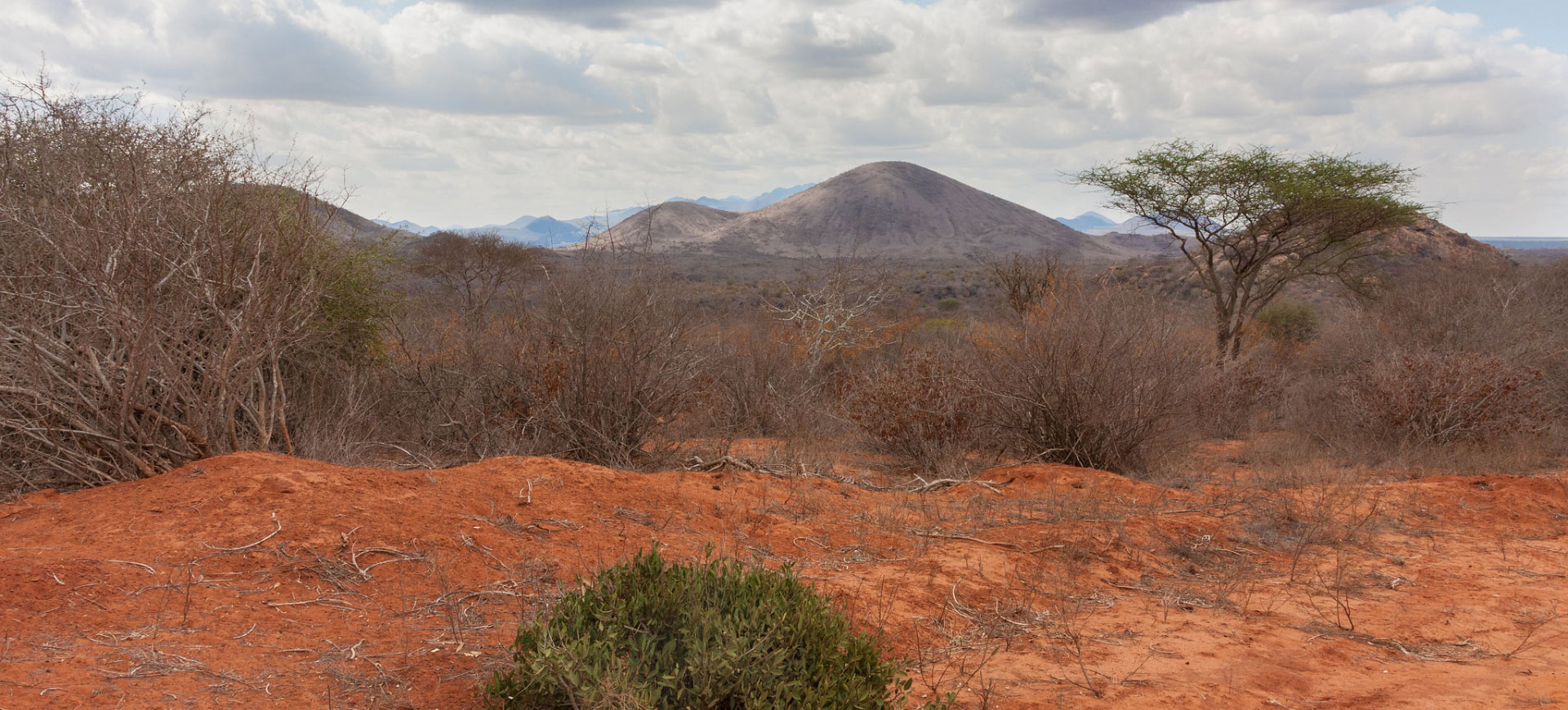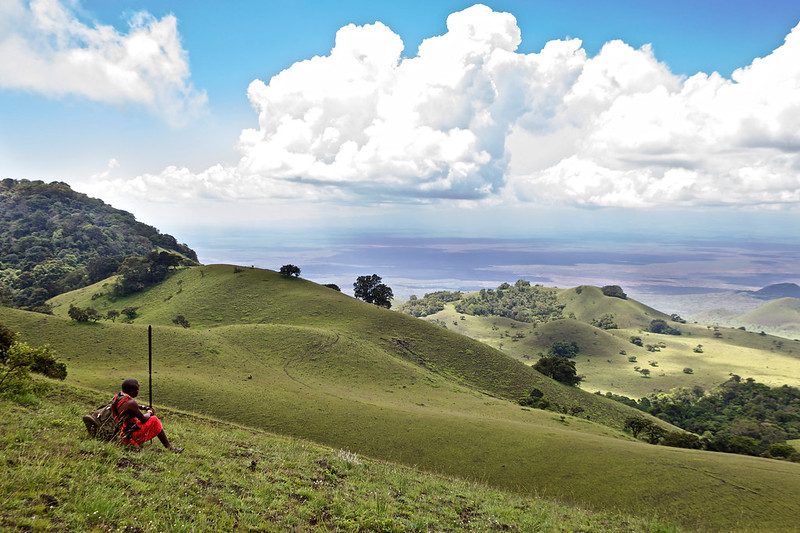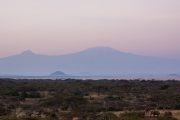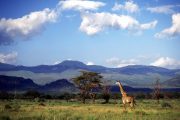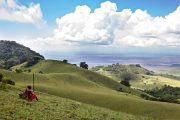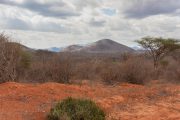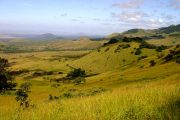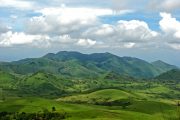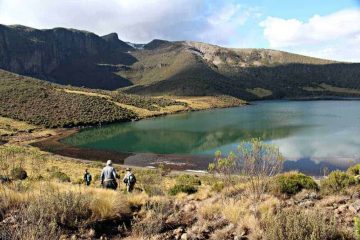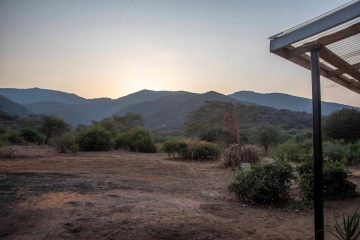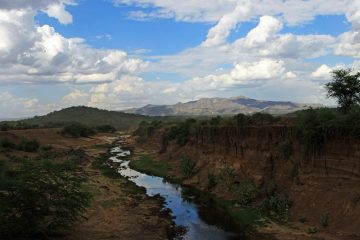The stooping Chyulu Hills on the border of the Amboseli plains and the Tsavo plains are easily overshadowed by Kenya’s tallest mountains. This 150-kilometer-long mountain range, located 200 kilometers southeast of Nairobi, was carved out of the enormous Tsavo West National Park in 1983, and its eastern slopes were designated as Chyulu Hills National Park. What made it so special that it was given this honor?
While Mt Kilimanjaro, around 70 kilometers southwest, is Africa’s tallest peak, the Chyulu Hills have the world’s deepest known lava tube cave.
Some of its volcanic eruptions occurred as recently as 240 years ago, leaving behind the Shetani lava flow and Chaimu Hill (and crater), both of which are coated in barren and unweathered black solid magna. The eruptions are still the subject of folklore in the local community, with demonic spirits spouting fire from the soil.
Kisula Caves
Several lava tube caverns, commonly known as Kisula Caves by the local people, crisscross the depths of the Chyulu Hills. The Cave Study Group of East Africa’s extensive exploration of one of these, the Upper Leviathan Cave, established it as one of the world’s longest caves, with a maximum length of 11.15 km, broken into two parts of 9.15 km and 2.0 km.
Rodney L. Crawford’s worldwide criteria for ranking the World’s Longest Lava Tube Caves ranks the Upper Leviathan Cave in third place.
These caverns have helped to put the Chyulu Hills on the map, drawing people from all over the globe who come to investigate them and stroll through the beautiful scenery with views of Mt Kilimanjaro in the background. Staircases have been built at several of the cave’s entrances to make them more accessible.
After a 15-kilometer journey over harsh, unspoiled territory from the Chyulu Hills National Park Headquarters, you may reach one of the Kisula caves’ entrances.
It should take you 3 to 4 hours one way. The caverns are accessible by 4 wheel drive vehicle because the road is motorable the entire way.
Because the location is a National Park, it is filled with animals, thus you need hire an armed guard from the Kenya Wildlife Service (KWS). While you’re at it, insist on hiring a KWS ranger who is knowledgeable with the caverns and eager to show you around. Some rangers are reportedly afraid of caverns and are hesitant to escort people down below.
Hiking the Chyulu Hills
“Satellite,” a former British Army training center, is one of the best basecamps for trekking on the Chyulu Hills.
At an elevation of 1900 meters, this dry campground is roughly 35 kilometers from the Chyulu Hills National Park headquarters. The location still has remnants of infrastructure erected by the British army, such as communications towers on the surrounding hill and storage tanks.
The Chyulu Hills spring to life with fresh growth of grass throughout the months of May to July and October to December following heavy and short rainfall, respectively, in stark contrast to the parched land that prevails the rest of the year.
During dry seasons, communities living near the Chyulu Hills light bush fires to clear out the long brown dry grass that grows here and create place for the appealing delicate new growth that emerges after rain, which is perfect for grazing their animals. This is the greatest time to visit the Chyulu Hills for hiking. From October to December, the beautiful red hot poker trees in bloom adorn the plains and depressions between the rounded hilltops that make up the majority of the scenery.
While there are no designated hiking paths on the Chyulu Hills, there are numerous animal pathways that crisscross the open undulating landscape, giving easy routes for exploring this vast wilderness.
With the entire Chyulu Hills Mountain Range covering over 100 kilometers from one end to the other, you’ll be spoilt for choice when it comes to exploring new routes, climbing hills, and taking in the sights. Instead of stunning cliff drops and deep valleys, you’ll discover gentle undulating hills, tree groves at hill junctions, and breathtaking vistas all around. Hills separated into two parts, one covered in grass and the other in forest, apparently as a result of winds not sweeping bush fires to every corner of the hill, can be found.
The Chyulu Hills are unique in that they lack surface rivers yet serve as a water catchment region for the surrounding plains.
Its porous surface works as a sponge, absorbing all precipitation and channeling it underground to subterranean reservoirs until emerging 50 kilometers straight south at Mzima Springs in Tsavo West. The subterranean flow of water from the Chyulu Hills to Mzima Springs is anticipated to take 25 years. Umani Springs, the lifespring of the lush 18,000-acre Kibwezi Forest to the northeast of the mountains, is another oasis at the foot of the Chyulu Hills that benefits from this watershed.
How to Get There
Take Kibwezi matatus from Gwasi Rd, near to the Tuskys Building (old OTC) off Race Course Road, and alight at Kibwezi market, around 190km from Nairobi, if utilizing public transportation.
The cost is around Ksh 500. Take matatus to Mtito Andei and alight approximately 1km from the Kibwezi turnoff, at the signposted Chyulu Hills National Park intersection. After that, you’ll trek 9 kilometers from the Mombasa Road intersection to the Chyulu Hills National Park Headquarters campground. You may also hire a boda boda from Kibwezi to transport you to the campground.
Take Mombasa Road from Nairobi, passing via Machakos, Emali, Sultan Hamud, Makindu, and the Kibwezi turnoff. Turn right at the Kibwezi turnoff after another 2 kilometers and drive another 9 kilometers to the campground at the Chyulu Hills National Park Headquarters.
The Satellite campground is 35 kilometers up the hills on a difficult road only accessible by 4WD.
Loitokitok Road also leads to a satellite campground on the Chyulu Hills. Turn left at the Mbirikani roadblock to reach Chyulu Hills (signposted). This road passes via Mbirikani Group Ranch, which is a KWS authorized agency. If you want to use this route, call John Kilitia ahead of time at 0700917502 so that they can handle your park entrance.
Accommodation
If you have a tent, you may pitch it near the Park Headquarters at the KWS campground. The campground has running water, a covered kitchen, a toilet, and a shower.
Visitors can also camp halfway up the hills at the cave entrance or at “Satellite” at the top. Because these places lack water and other amenities, visitors must supply enough water to last the duration of their stay. They are only accessible by 4WD.
Related

